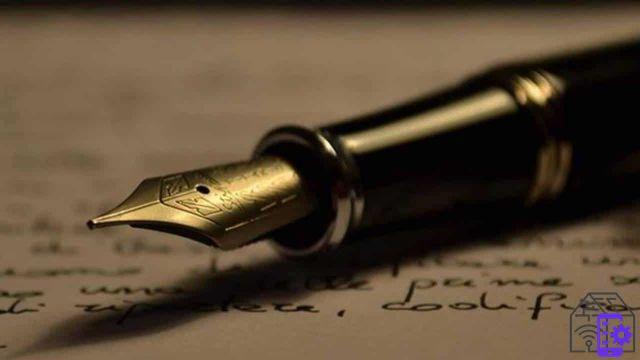
Have you ever stopped to think what is the story behind an object of common use like the pen? We do, we admit it. And although we live in times when there is relatively little use of pens and pencils, we have decided to retrace the history of one of the greatest inventions ever. And even more ancient, considering that the origins of this object have their roots in Ancient Egypt. Let's go and find out how the pen was born, how it has changed and how it will evolve in the future.
The pen: a millennia-long history
It may seem incredible, yet the origin of the pen can be traced back toAncient Egypt. In fact, at that time the scribes used thin stems of rush, soaked in ink-like solutions, to write on papyrus rolls. Of course, we cannot say that it was a real pen, but this is undoubtedly the beginning of the story of an object with a complex evolution. Over the centuries, in fact, the rush was first replaced by penne d'oca and then by metallic nibs. In particular, the Greeks and Romans used nibs to engrave wax-coated tablets. In some ways, this evolution brings us closer to the modern concept of the pen, although it cannot yet be defined as such.
On the other hand, for many centuries the most used instrument for writing was the quill. The operation was very simple: it was enough dip it into the inkwell, the bottle containing the ink, and then start writing. Where necessary, as you can imagine, the tip was tempered to ensure smudge-free writing. An uncomfortable practice, to which an alternative solution was found only at the beginning of the nineteenth century. After all, better late than never.
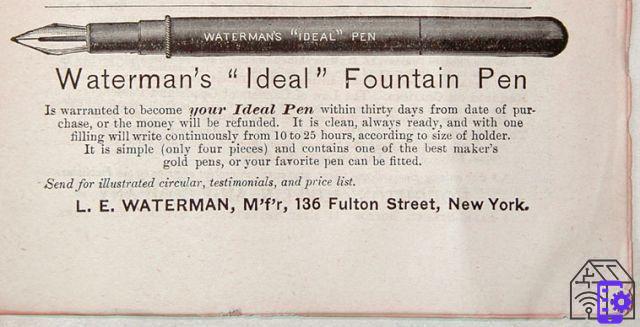
The fountain pen, the first step towards modernity
Towards the middle of the nineteenth century the habit of apply metal nibs to the quills so as to avoid not having to temper them often. But if this solved one problem, at the same time it created another: the structure of the nibs imposed a considerable amount stiffness in writing. It was then that James Perry, an English journalist and publisher, tried to give it greater elasticity by applying small cuts and punctures. Indeed, to solve the problem of stiffness, steel nibs began to be mounted on wooden or ivory straws, instead of goose feathers. In this way he solved the problem of stiffness, but unfortunately many others remained.
Once passed in the inkwell, in fact, the nibs made one fall on the sheet excessive amount of ink. The problem was related to the fact that, when passing from the inkwell to the sheet, the nib always lost a few drops of ink. It was now the end of the nineteenth century and many characters of all kinds trying to solve the problem in some way. The basic idea was to insert a hollow tube containing the ink inside the nib, so as not to disperse it. But only in 1883, this idea materialized into something real thanks to Lewis Waterman, considered to all intents and purposes the father of fountain pen.
In fact, this American is responsible for the invention of themultichannel power supply, which greatly limited ink leaks into the pen. A completely random intuition, which over the years has been forcibly traced back to an accident that affected Waterman himself. The story goes that Lewis, then an insurance agent in New York, did not close a contract with a wealthy client because of an ink stain that had soiled the sheet. An episode invented by the Marketing department of Waterman's company, which achieved considerable success over the centuries. On the other hand, the first real evolution of the pen could only give joys to the American.
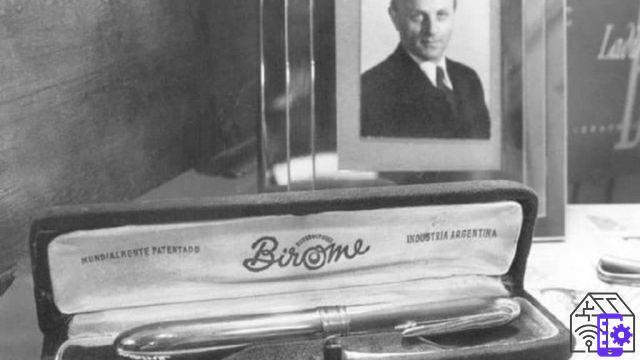
The revolution of the ballpoint pen
Let's jump a few decades and arrive at the invention that has really revolutionized our way of writing: the ballpoint pen. As many will know, it is due to Laszlo Biro, Hungarian journalist, the intuition of the ballpoint pen. Given his intense writing activity, he studied to try to develop an instrument that was simpler and more practical than the traditional fountain pen. Although improved, this still presented quite significant problems: ink often stained the sheet, drying took a long time, and the pen needed to be refilled often. Incidents too inconvenient for a journalist.
It was then that Biro thought of replacing the ink usually used for pens with that used in newspaper printing. A correct intuition that did not however guarantee a completely optimal writing. And here is the solution that revolutionized writing: insert a small metal sphere free to rotate at the end of the pen. By rotating, the sphere collects the ink on the cartridge and deposits it on the sheet. In a measured and constant way. Thus was born the ballpoint pen, one of the greatest inventions of our century. In the following years, making a series of improvements, Biro began to sell its product in Europe and Argentina.
The too high price of the product and the unprofitable sales led him to make an agreement with the Italian baron Marcel Bich, to which the Hungarian gave his patent. After some minor adjustments, in 1950 he started mass production of the ballpoint pen, launching it on the market under the name of BIC. At this point, we might not even go any further, because we all have at least one of these pens at home. But perhaps, until now, we have never known what its origin was.
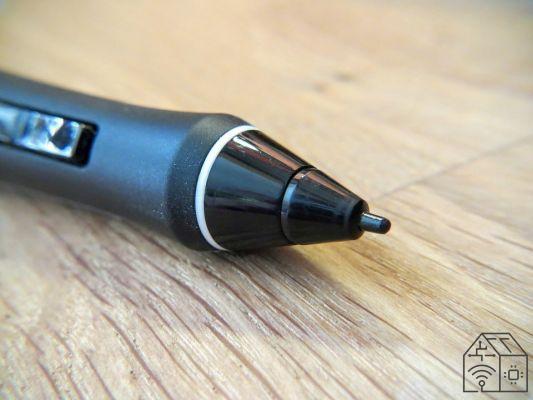
The future is in the digital pen
When you are talking about digital pen, one immediately thinks of the "styluses" used for tablets and smartphones. In fact, this term refers to all those pens that allow you to digitize everything that is written by hand. The design is absolutely similar to that of a common ballpoint pen, but the operation is really much more sophisticated. In short, thanks to an advanced technology, this tool is able to simultaneously digitize whatever you write, thus saving a copy of the document that you can view on the device of your choice.
How is it possible? Thanks to two different modes of operation. In the first, the combination of a motion sensor and a receiver with an LCD screen allows you to capture text in digital format. In the second, one infrared micro camera placed at the end of the pen, it records what is written, then transferring it directly to an App connected to the instrument. In short, how it works is different, but the purpose is unique: to digitize what we write. In this way, we will be able to transfer notes and so on on our digital devices. A nice step forward compared to the fountain pen that dirtied the sheets, don't you think?
Discount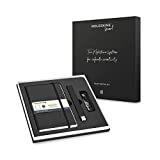 Moleskine Smart Writing Set Ellipse, Notebook e Pen+ Ellipse...
Moleskine Smart Writing Set Ellipse, Notebook e Pen+ Ellipse...
- The Paper Tablet allows you to fix your ideas by hand on paper and thanks to the Moleskine Pen + to transfer all the ...
- Paper Tablets are available with lined, blank, or dotted pages
- The Pen + pen combines the practicality of paper with all the advantages of digital creativity; simple to use and ...




















![[Review] Samsung Powerbot VR7000: the robot vacuum cleaner from Star Wars](/images/posts/6bc44de38605b5c0fa12661febb1f8af-0.jpg)





